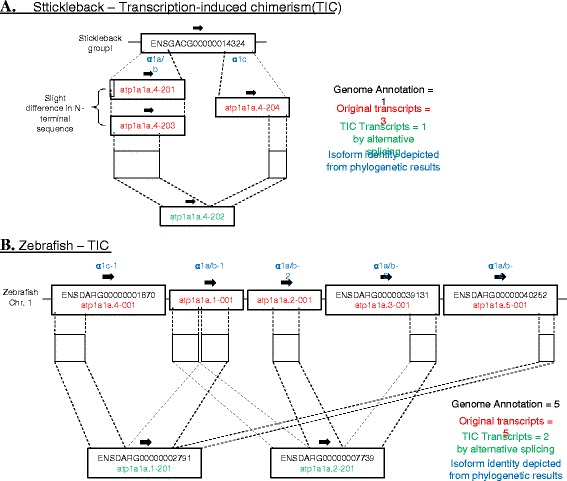Fig. 3.

Schematic diagram showing the transcription-induced chimerism (TIC) at chromosomal regions of NKA α1 in (a) stickleback, and (b) zebrafish. In stickleback (a), two original α1 genes (red) were hidden in a single annotation of atp1a1 as alternative transcripts. The chimeric transcript atp1a1a.4-202 (green) formed by alternative splicing across two tandem genes is the result of TIC. In zebrafish (b), five original α1 genes (red) were present on the chromosome but they were not corresponding to the five annotated genes in the genome. Instead, two TIC transcripts (green) were interpreted as genes while two original genes were interpreted as alternative transcripts. Various color displays on the right shows different definitions of the annotation, genes, and transcripts. Blue color indicates isoform identity depicted from phylogenetic results
